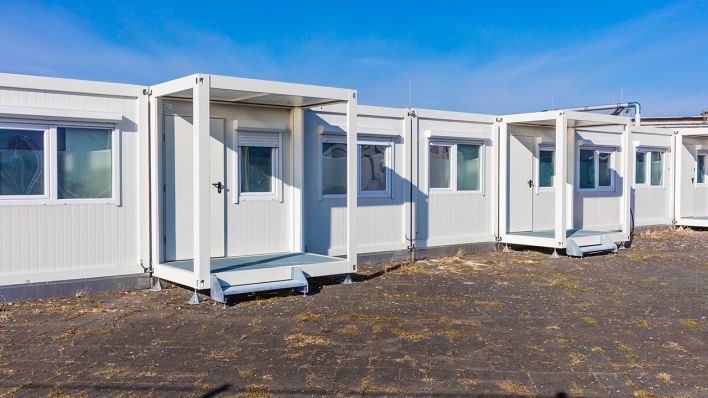The accommodation brokerage for refugees works in Berlin despite numerous Corona restrictions: more people were accommodated in 2020 than in the year before. Container villages and communal accommodation are still needed.
–
Despite numerous restrictions due to the corona pandemic, more refugees could be accommodated in apartments in Berlin in 2020 than in the previous year. This was announced by the State Office for Refugee Affairs (LAF) when asked by rbb | 24.
Last year, a total of 2,097 refugees were provided with private housing. In the previous year it was 1,984. In the first four months of this year there have been 539 people who have received accommodation from the LAF.
–
Around 18,000 people currently live in one of the 80 refugee shelters in the country. According to the LAF, around half of the people are recognized as refugees. In addition, refugees will continue to be accommodated in shared accommodation or hostels.
According to the LAF, there are currently 20 modular accommodations (MUF) for refugees in operation, “which generally have a maximum term of ten years from commissioning,” according to the LAF. The lifespan of the buildings is stated to be up to 80 years. A total of 52 MUFs are to be created in Berlin, the costs amount to at least 750 million euros. Against the construction of the buildings made of prefabricated parts, there has been resistance again and again, citizens’ initiatives and district politicians have criticized that building space for social infrastructure such as schools would be lost. In addition, the Senate was accused of having repeatedly violated building law in the rapidly erected buildings.
–
In addition to the MUFs, nine so-called Tempohomes are also used; the operating time is set at three years. The containers are not very comfortable and not very energy efficient, but in contrast to shared accommodation they offer more privacy. Dissolved Tempohomes are stored, several dozen modules have already been distributed to the Berlin fire brigade and clubs for further use. It is also planned to use it as an extension for daycare centers and schools.
The number of refugees has recently increased again. According to official figures, 2,256 asylum seekers came to Berlin between January and May, 24 percent more than in the same period of the previous year. Most of them came from the war zones in Syria and Afghanistan. Overall, however, the numbers have been declining for years: while around 55,000 refugees came to Berlin in 2015, there were only just under 4,600 in 2020.
–


